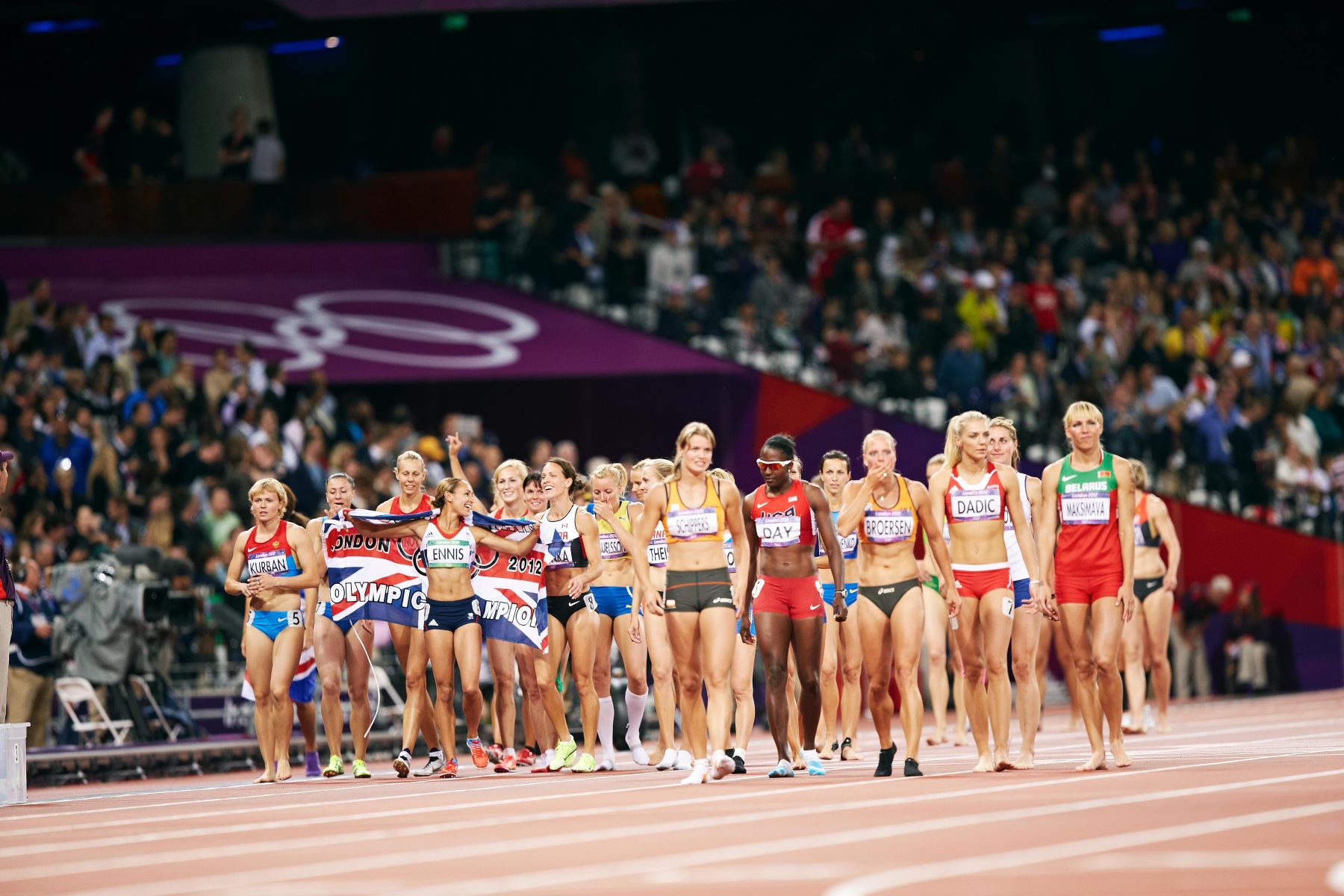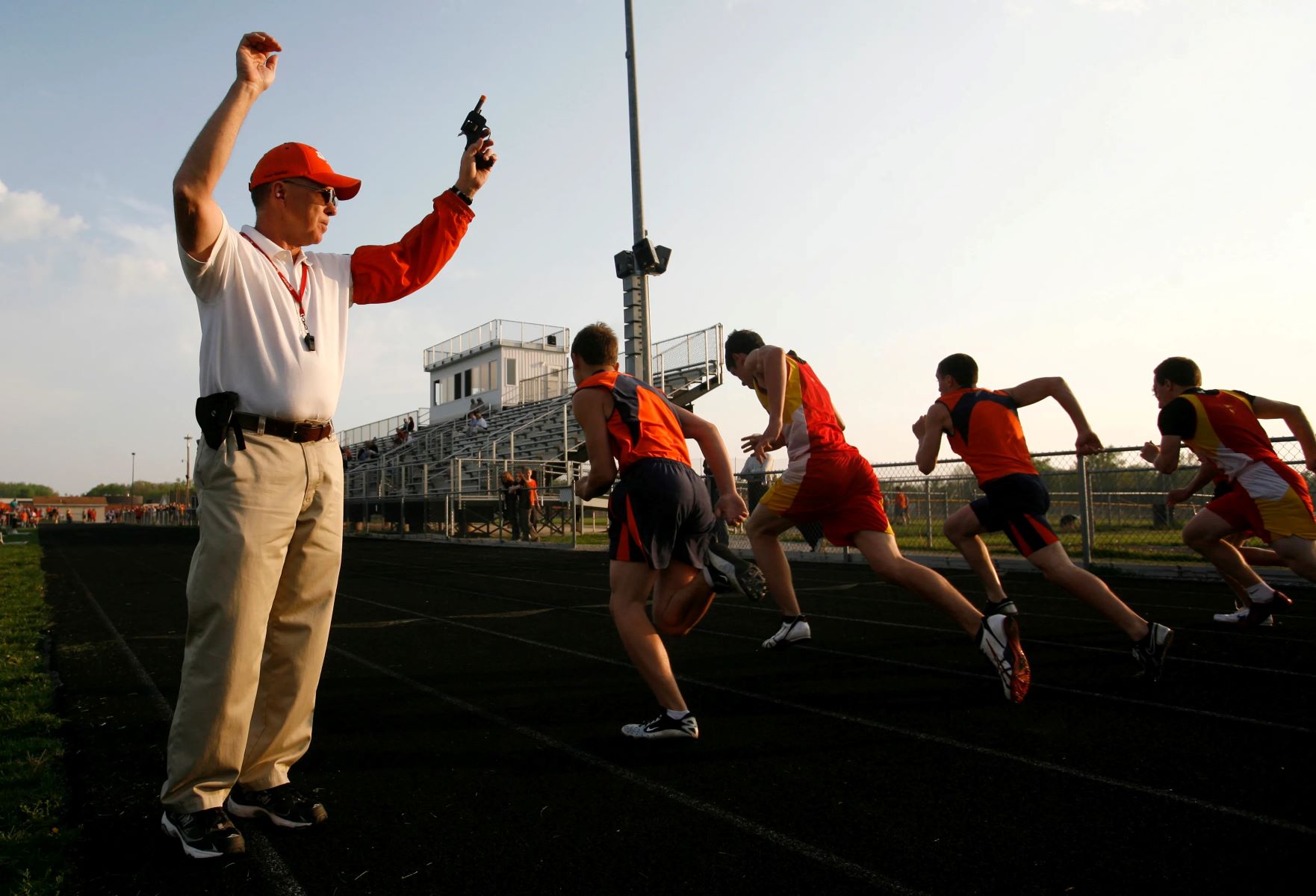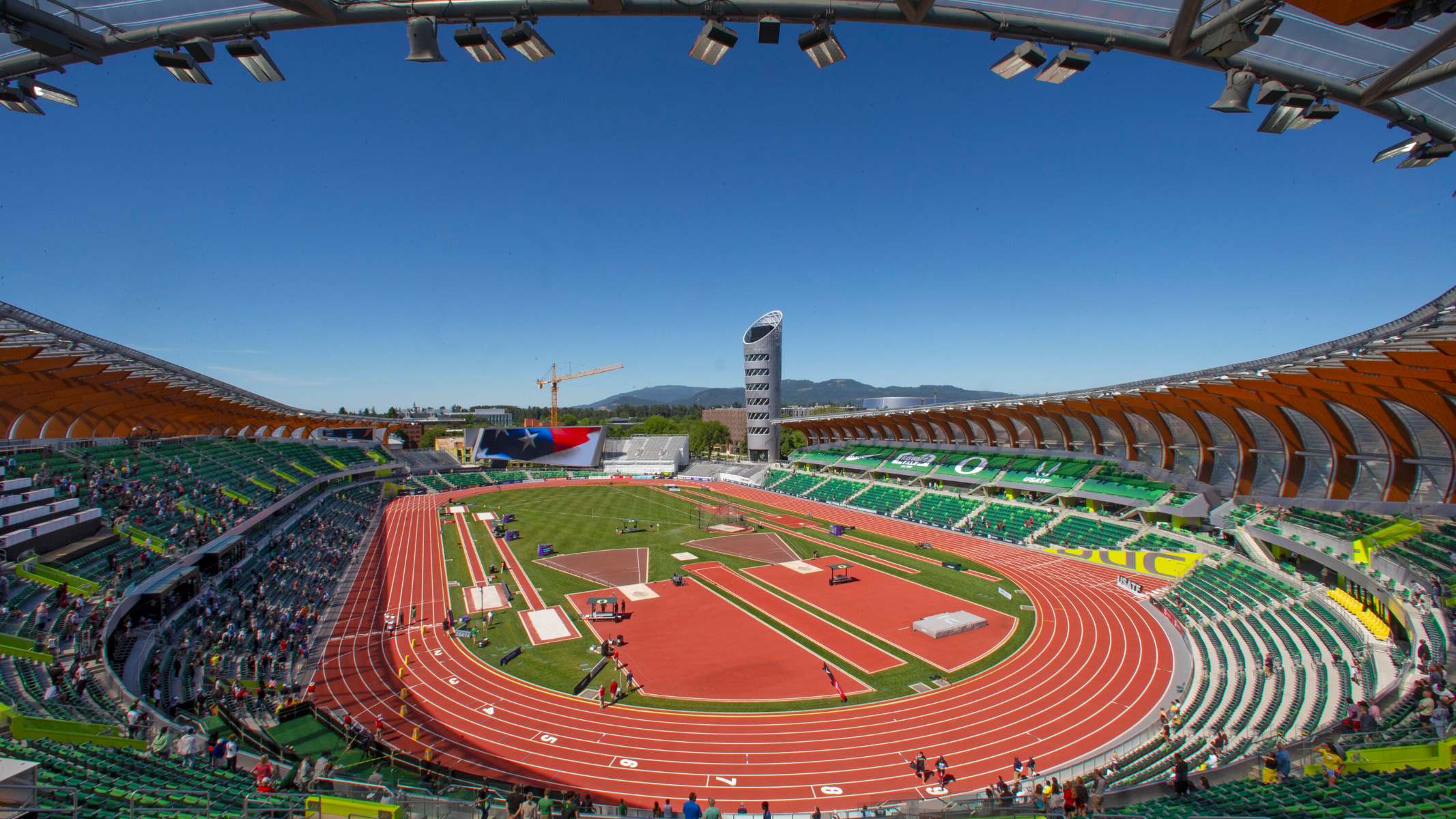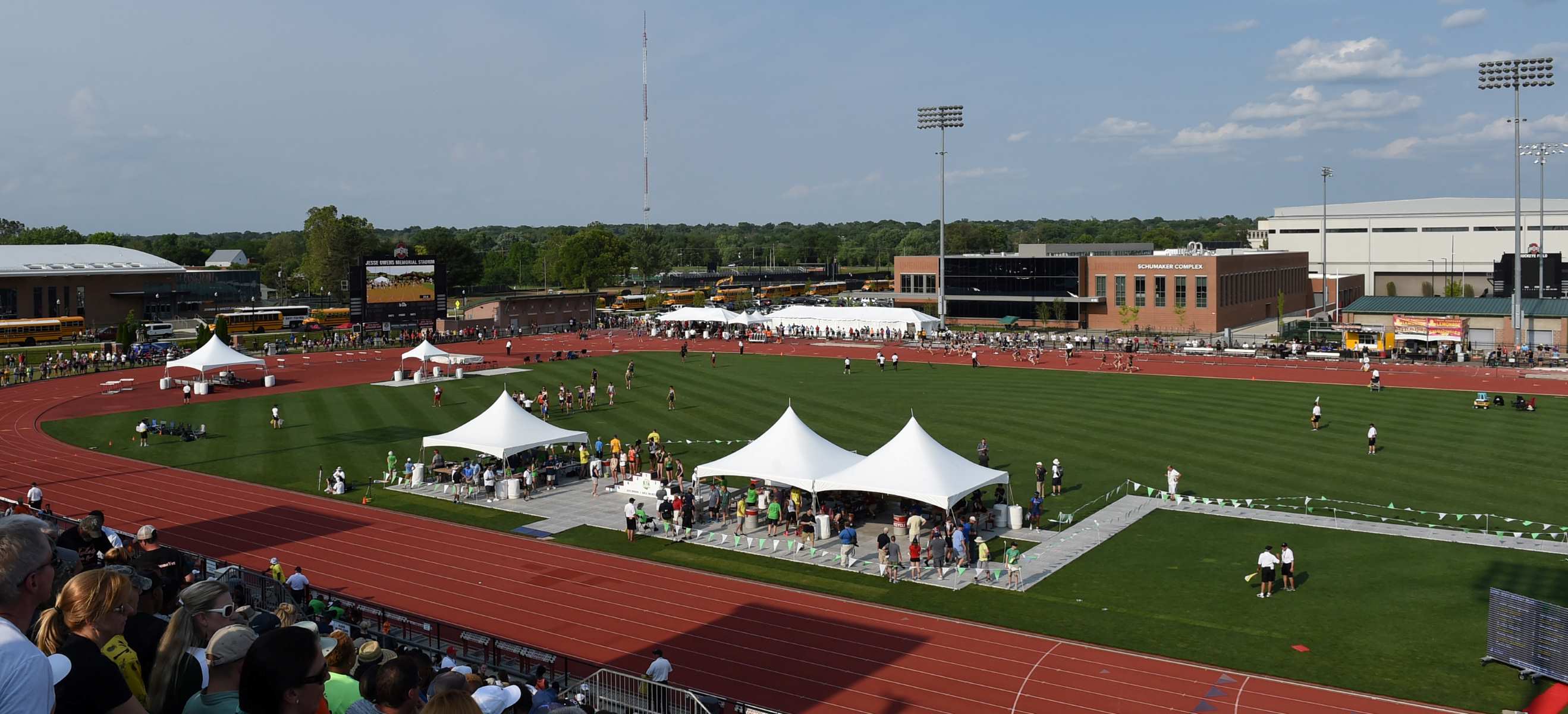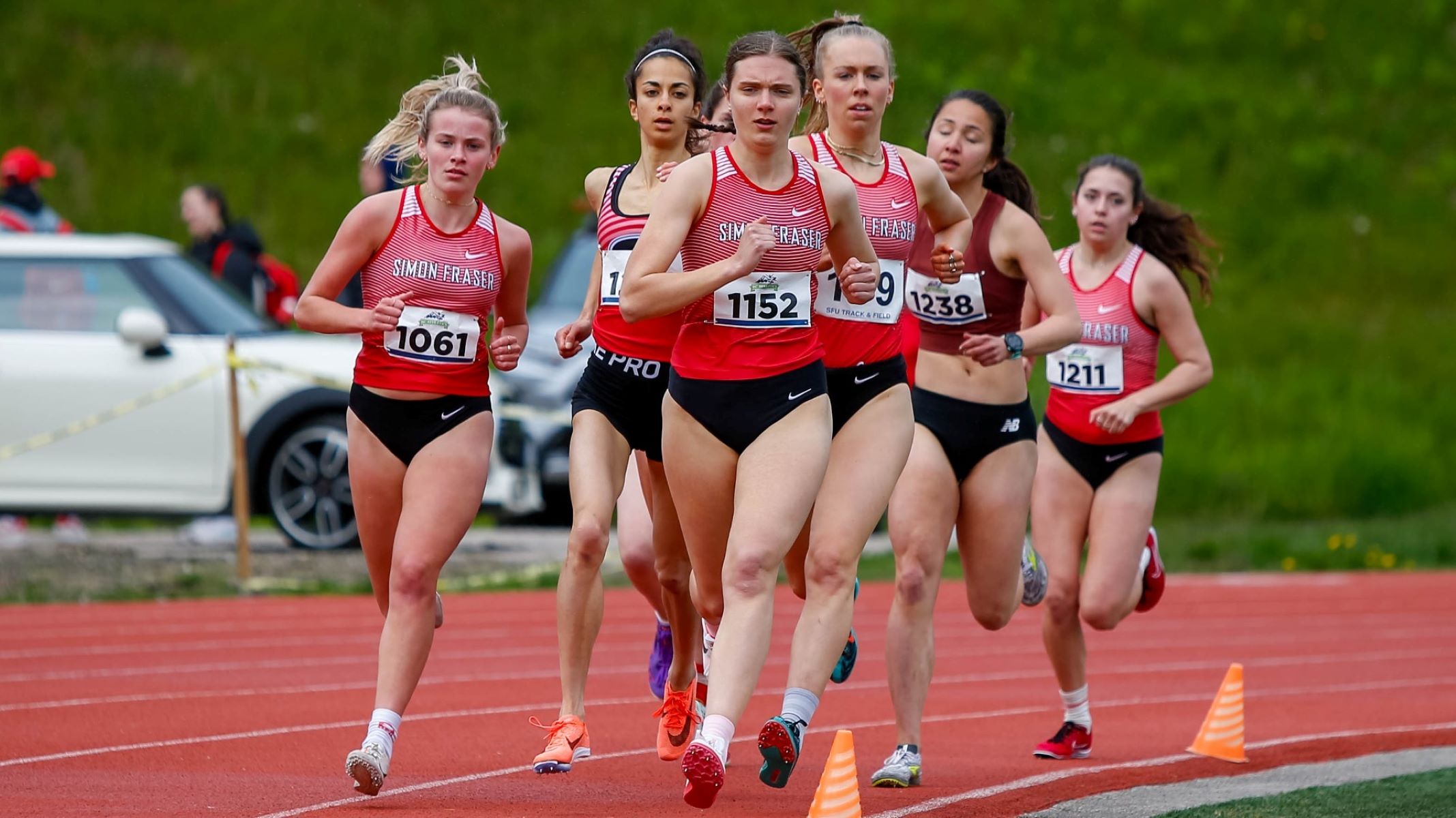Home>Misc>Featured>How Popular Is Track And Field In The World
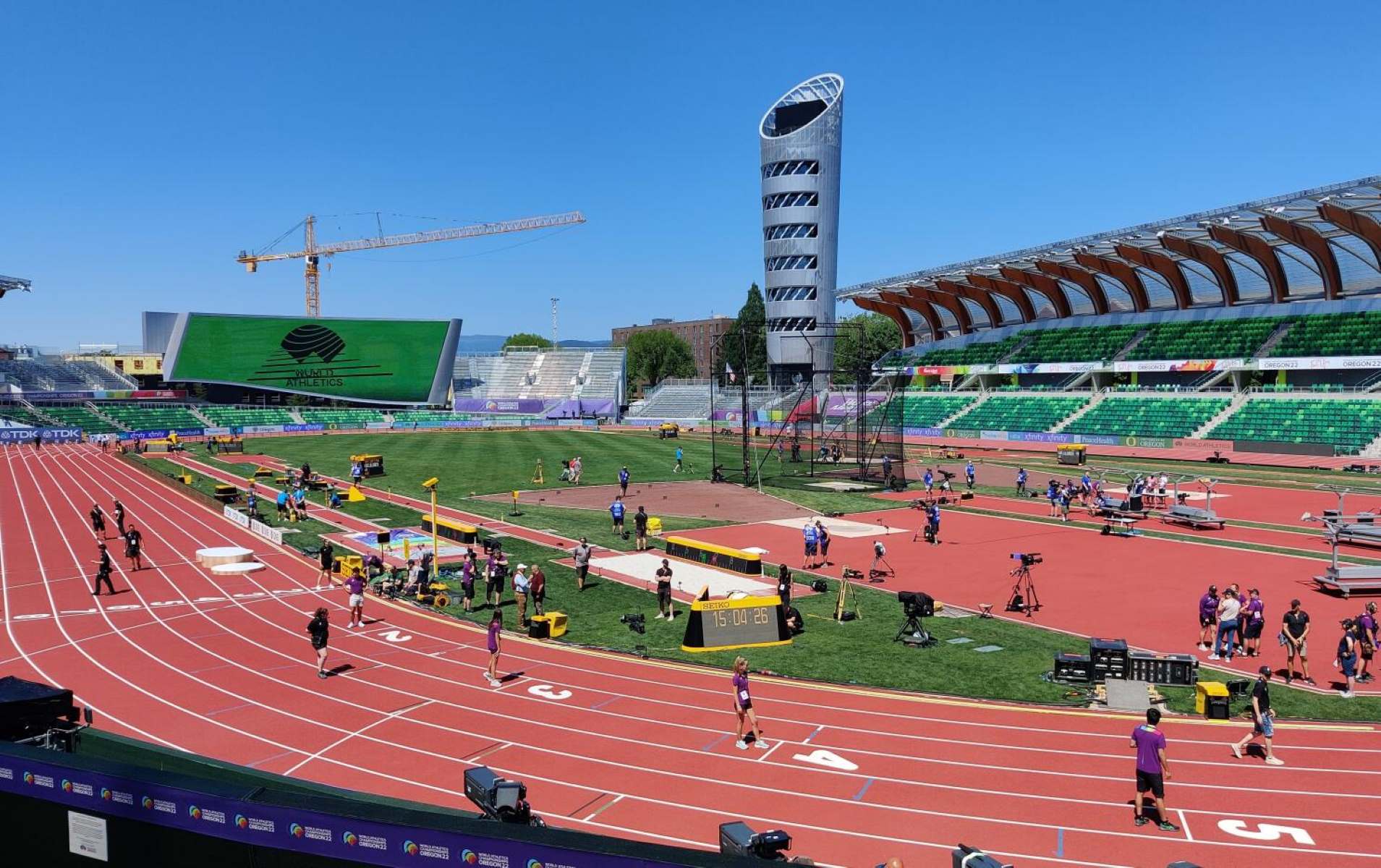

Featured
How Popular Is Track And Field In The World
Modified: January 22, 2024
Discover the global popularity of track and field with our featured analysis. Learn about its widespread appeal and influence on athletes worldwide.
Introduction
Track and field, also known as athletics, is a sport that encompasses a wide range of athletic events. From sprints to long-distance running, jumps, throws, and relays, track and field showcases the power, speed, skill, and endurance of athletes. This dynamic and thrilling sport has a rich history that dates back to ancient times and continues to capture the imagination of millions around the world today.
The origins of track and field can be traced back to ancient Greece, where athletic competitions were held as part of religious festivals. These events, known as the Olympic Games, were held every four years and included various individual and team events. Over time, track and field evolved into a standalone sport, gaining popularity across different civilizations and continents.
Today, track and field is an integral part of the sporting landscape, with competitions held at various levels, from local and national events to prestigious international championships like the Olympics and World Athletics Championships. The sport has a universal appeal, attracting athletes of all ages, genders, and backgrounds, and fostering a sense of camaraderie, competition, and personal achievement.
Track and field events are not only a demonstration of physical prowess but also a celebration of human potential. Athletes push their bodies to the limit, striving to achieve personal bests, break records, and reach the pinnacle of their sport. These events captivate audiences with their raw athleticism, strategic maneuvers, and nail-biting finishes. From the electrifying speed of sprinters to the grace and power of long jumpers and the precision of javelin throwers, track and field events offer a spectacle that is both awe-inspiring and exhilarating.
Beyond the sheer thrill of the sport, track and field also has a profound impact on society. It promotes a healthy and active lifestyle, inspiring individuals of all ages to engage in physical activity and strive for excellence. Track and field events showcase the values of discipline, perseverance, and teamwork, serving as a microcosm of life itself. Furthermore, the sport has a unifying effect, bringing together athletes and fans from different cultures, nations, and backgrounds, fostering a sense of global community and mutual respect.
In the following sections, we will delve deeper into the historical significance of track and field, explore its global participation, examine its popularity as a spectator sport, discuss prominent events worldwide, analyze its influence on other sports, and highlight the challenges and opportunities faced by this dynamic discipline. Track and field truly is a sport that transcends boundaries and continues to captivate the hearts and minds of people all over the world.
Historical Significance of Track and Field
Track and field, as a sport, holds immense historical significance. It can be traced back to ancient civilizations that valued physical fitness and sought to showcase athletic prowess. The origins of track and field can be found in ancient Greece, where athletic events were an integral part of religious festivals. The most prestigious of these events were the Olympic Games, which were held every four years and involved a variety of track and field disciplines.
Athletic competitions in ancient Greece were not just about physical prowess; they were also seen as a way to honor the gods. These events were watched by thousands, and winning athletes were hailed as heroes. Over time, these games grew in popularity and became a symbol of unity and peaceful competition among different city-states.
The Olympic Games were eventually discontinued with the decline of the Roman Empire, but the spirit of track and field endured. In the 19th century, the modern Olympic movement was revived by Pierre de Coubertin, leading to the first modern Olympic Games in 1896. Since then, track and field has been an integral part of every edition of the Olympics, symbolizing the unity of nations and the pursuit of athletic excellence.
Throughout history, track and field has witnessed remarkable achievements that have left a lasting impact. One such example is the legendary Jesse Owens, who defied racial prejudice by winning four gold medals at the 1936 Berlin Olympics. Owens’ victories not only showcased his exceptional athletic talent but also challenged the notion of racial superiority propagated by Adolf Hitler’s Nazi regime.
Track and field has also been a platform for groundbreaking individual accomplishments. In 1954, Roger Bannister became the first person to run a mile in under four minutes—an achievement that was considered impossible until then. Bannister’s record-breaking run not only propelled him into the annals of track and field history but also inspired generations of athletes to push the boundaries of what is physically possible.
Furthermore, track and field has served as a catalyst for social change. During the Civil Rights Movement in the United States, athletes like Tommie Smith and John Carlos made a powerful statement by raising their fists in a black power salute during their medal ceremony at the 1968 Olympics. Their action sparked controversy, but it shed light on the racial inequality prevalent at the time and highlighted the power of athletes to bring attention to social issues.
Track and field’s rich historical legacy continues to influence the sport today. It reminds us of the transformative power of sports and their ability to transcend boundaries, challenge norms, and inspire generations. The sport’s historical significance serves as a constant reminder of the values we hold dear—fair play, respect, and the pursuit of excellence—while also reminding us of the potential that lies within each of us to achieve greatness.
Global Participation in Track and Field
Track and field is a sport that attracts participants from all corners of the globe. Its universal appeal stems from the fact that it requires minimal equipment and can be practiced in various settings. From the bustling streets of major cities to rural villages and open fields, track and field events can be held almost anywhere, making it accessible to people of all backgrounds.
Participation in track and field spans across different age groups, from children and youth to adults and seniors. Many schools and universities incorporate track and field into their physical education curriculum, providing young individuals with the opportunity to discover and develop their athletic abilities. Additionally, track and field clubs and community organizations offer avenues for athletes to compete at local, regional, and national levels.
At the elite level, track and field boasts a truly global presence. Countries from every continent compete in international championships, such as the Olympics, World Athletics Championships, and continental games. These events showcase the best athletes from around the world, highlighting their exceptional skills and providing a platform for cultural exchange and friendly competition.
Several factors have contributed to the growth of track and field participation on a global scale. The rise of athletics federations and governing bodies in various countries has played a crucial role in organizing and promoting the sport. These organizations provide coaching, training facilities, and competitive platforms for athletes of all levels.
Advancements in technology and transportation have also facilitated international participation in track and field. Athletes can now travel to different countries to compete and train, learning from diverse coaching methods and gaining exposure to different track and field cultures. This exchange of knowledge and experience has further fueled the growth and development of the sport on a global scale.
Furthermore, track and field’s inclusivity and flexibility contribute to its widespread participation. Unlike team sports that require a set number of players, track and field events can be practiced individually or as part of a team, allowing for a range of participation options. Athletes can choose to compete in specific disciplines that align with their skillsets and interests, such as sprints, long-distance running, hurdles, jumps, throws, and relays.
Track and field’s global participation not only fosters the development of athletic talent but also nurtures a sense of camaraderie and cultural exchange. Athletes from different countries inspire one another, pushing the boundaries of what is possible in their respective events. This global presence also brings people together in celebration of the sport, creating a shared passion and appreciation for track and field’s beauty and athleticism.
As track and field continues to grow in popularity worldwide, it serves as a platform for promoting diversity, inclusivity, and unity. The global participation in track and field represents the power of sports to break down barriers and bring people from different backgrounds together in pursuit of a common goal—to showcase their athletic abilities and inspire others to achieve greatness.
Track and Field as a Spectator Sport
Track and field events have long captivated audiences around the world, making it a popular spectator sport. The thrilling nature of the sport, combined with the display of human strength, speed, and agility, creates an exciting and engaging experience for spectators of all ages.
One of the reasons track and field is so appealing as a spectator sport is the diverse range of events it offers. From explosive sprints to strategic long-distance running, from gravity-defying jumps to powerful throws, there is something for everyone. Each event has its own unique set of skills and techniques, providing spectators with a variety of thrilling moments to witness.
Track and field events are often held in state-of-the-art stadiums, creating an electric atmosphere that adds to the excitement. The sound of the starting gun, the roar of the crowd, and the intense competition on the track or in the field create an immersive experience for spectators, making them feel like an integral part of the action.
Another reason track and field is popular among spectators is the element of unpredictability. Whether it’s a photo-finish in a sprint race, a record-breaking jump, or a last-minute surge in a long-distance race, track and field events are filled with unexpected twists and turns. The suspense and anticipation keep spectators on the edge of their seats, eagerly awaiting the outcome.
In addition to the thrilling performances, track and field events also provide opportunities for spectators to witness incredible displays of athleticism and technique. The raw power of sprinters exploding out of the blocks, the grace and precision of high jumpers soaring through the air, and the sheer strength of shot putters and hammer throwers are mesmerizing to watch.
Track and field events also offer fans the chance to witness the breaking of records. Whether it’s a new world record or a national record, witnessing history being made creates a sense of awe and excitement among spectators. Breaking records not only showcases the incredible talent of the athletes but also pushes the boundaries of what is considered humanly possible.
Moreover, track and field events allow spectators to connect with athletes on a personal level. Unlike team sports where athletes might be obscured by uniforms or equipment, track and field athletes are front and center, allowing spectators to see their emotions, determination, and grit up close. The intimate nature of the sport creates a sense of admiration and empathy, as spectators witness the athletes’ physical and mental efforts firsthand.
With the advent of technology, track and field events have become even more accessible and engaging for spectators. Live broadcasts, instant replays, slow-motion shots, and commentary provide a comprehensive viewing experience, allowing fans to analyze and appreciate the intricacies of each event.
Lastly, track and field events often foster a sense of national pride and unity. Spectators come together to support their favorite athletes, creating a vibrant and spirited atmosphere. Whether it’s the deafening cheers for a local hero or the shared excitement of witnessing a world-class performance, track and field events have the power to unite communities and nations.
Track and field’s appeal as a spectator sport lies in its ability to captivate audiences with its thrilling performances, awe-inspiring athleticism, unpredictable outcomes, and the sense of connection it fosters between athletes and spectators. From the casual fan to the die-hard enthusiast, track and field events provide a truly memorable and exhilarating experience.
Prominent Track and Field Events Worldwide
Track and field is home to some of the most prestigious and anticipated sporting events worldwide. These events bring together the best athletes from around the globe, captivating audiences with their incredible performances and creating memorable moments in the history of the sport.
The Olympic Games, held every four years, stand out as the pinnacle of track and field competitions. As one of the oldest and most revered sporting events, the Olympics showcase a wide range of track and field disciplines, including sprints, middle-distance and long-distance running, hurdles, relays, jumps, and throws. The Olympic track and field events draw massive global attention, setting the stage for athletes to shine on the grandest stage.
The World Athletics Championships, organized by World Athletics (formerly known as the International Association of Athletics Federations), is another prestigious global event. Held biennially, the World Championships bring together athletes from different countries to compete in various track and field disciplines. With its rigorous qualification process and fierce competition, the championships serve as a platform to crown world champions and break records.
Aside from these major international events, numerous regional competitions hold significant importance in the world of track and field. For example, the European Athletics Championships brings together athletes from European nations to compete against one another and showcase their talent. Similarly, the Asian Athletics Championships, African Athletics Championships, and North American, Central American and Caribbean Championships (NACAC) are regional events that attract top athletes in their respective regions.
Cross-country races also hold a special place in the world of track and field. These races take place over natural terrains, challenging athletes with varied surfaces and terrains. The World Cross Country Championships, held annually, features both individual and team competitions, showcasing the stamina, endurance, and strategic prowess of distance runners.
Track and field events also feature prominently in multi-sport events such as the Commonwealth Games and the Pan American Games. These events bring together athletes from specific regions, offering a platform for intercontinental competition and showcasing the immense talent within those areas.
Another prominent track and field event is the Diamond League. Founded in 2010, the Diamond League is a series of athletics meetings held across different cities around the world. It features the best athletes in each discipline, competing for points to qualify for the Diamond League Final. The series not only provides thrilling competition but also serves as a vehicle to popularize the sport and engage audiences globally.
Certain track and field events have also gained iconic status due to their unique appeal. The Boston Marathon, for example, is the world’s oldest annual marathon and attracts thousands of participants and spectators. The IAAF World Athletics Relays, meanwhile, focuses solely on relay events, bringing together teams from different countries to compete for glory and world records.
These prominent track and field events not only showcase the exceptional talent and athleticism of athletes but also create history, inspire greatness, and foster a sense of unity among nations. They serve as platforms for athletes to push their limits, break records, and be celebrated as the best in the world. The excitement and anticipation surrounding these events make them a highlight on the sporting calendar and a true testament to the global popularity and enduring legacy of track and field.
Popularity of Track and Field in Different Regions
Track and field is a sport that has gained popularity in various regions around the world, captivating audiences and producing exceptional athletes. While the sport enjoys a global presence, the level of popularity and fan engagement can vary in different regions due to cultural, historical, and societal factors.
Europe has long been a hotbed for track and field, with a rich history and tradition associated with the sport. Countries like Great Britain, Germany, Russia (now competing under the banner of Authorised Neutral Athletes), and France have produced numerous world-class athletes and have a strong fan base. The European Athletics Championships and Diamond League meetings held in Europe draw large crowds and receive significant media coverage, contributing to the sport’s popularity in the region.
In North America, track and field has experienced fluctuations in popularity. The United States has a storied track and field history, with legendary athletes like Carl Lewis, Jackie Joyner-Kersee, and Usain Bolt captivating the American audience. The U.S. Olympic Trials and NCAA Championships often attract large crowds, and the sport receives considerable media coverage during major events. In recent years, however, other sports like basketball, football, and baseball have dominated the American sports landscape, leading to a slightly diminished popularity of track and field.
In Africa, track and field holds immense significance. The continent has produced some of the world’s greatest middle-distance and long-distance runners, such as Haile Gebrselassie, David Rudisha, and Eliud Kipchoge. Track and field events, such as the African Athletics Championships and the annual World Cross Country Championships, draw enthusiastic spectators who passionately support their athletes. The sport serves as a pathway to success and inspires young African athletes to follow in the footsteps of their heroes.
Asia has seen a steady rise in the popularity of track and field in recent years. Countries like China, Japan, and India have made significant strides in the sport and have produced notable athletes. The Asian Athletics Championships and Asian Games showcase the talent and dedication of Asian athletes, attracting fan support and media attention. Additionally, the growing middle-class population and increased awareness of fitness and sports participation have contributed to the rising popularity of track and field in the region.
In Oceania, track and field, particularly athletics events like the javelin throw and discus, have found a strong fan base. Australia, New Zealand, and Pacific Island nations have produced world-class athletes in both track and field events. Competitions such as the Australian Athletics Championships and the Pacific Games provide platforms for athletes to shine and create a sense of regional pride and unity.
Track and field has also gained popularity in South America, with countries like Jamaica, Brazil, and Colombia emerging as powerhouses in sprinting and jumping events. The region’s success, particularly in the sprints, has garnered significant attention and fan support. Events like the South American Championships and the Diamond League meetings held in South America attract crowds who cheer passionately for their local and regional talent.
The popularity of track and field in different regions can be influenced by various factors, including historical success, cultural significance, media coverage, and societal preferences. While the sport may experience fluctuations in popularity over time, its universal appeal and the awe-inspiring performances of athletes continue to capture the imagination of people around the world.
Track and Field’s Influence on Other Sports
Track and field, as a sport, has had a profound influence on a wide range of other sports. Its emphasis on speed, agility, strength, and endurance has shaped the development of athletic performance in numerous disciplines. From team sports to individual pursuits, the principles and techniques of track and field have left their mark on various athletic endeavors.
One area where track and field has had a significant impact is in the realm of sprinting. The explosive power and speed required for sprint events have influenced sports like football, rugby, and basketball. Athletes in these sports often incorporate track and field training methods, such as sprint intervals and plyometric exercises, to enhance their speed and agility on the field or court. The technique used in sprinting, such as proper body alignment, arm movement, and stride length, can also be seen in the movements of athletes in other sports.
Track and field also plays a role in the development of long-distance running. The training techniques and principles applied in track and field, such as interval training, endurance workouts, and pacing strategies, have been adopted by runners in road races, marathons, and triathlons. The understanding of proper running form and strategies used by track and field athletes have provided insights to distance runners seeking to improve their performance and reduce the risk of injury.
Jumping events in track and field, such as the high jump and long jump, have influenced other sports as well. The technique used in these events, including the approach, takeoff, and landing, has influenced sports like basketball, volleyball, and gymnastics. Athletes in these sports benefit from track and field training to improve their jumping ability, coordination, and body control, which are essential elements in their respective disciplines.
Track and field throwing events, such as shot put and javelin, have also shaped other sports. The explosive power, upper body strength, and technique involved in throwing have influenced disciplines like baseball, softball, and American football. In baseball and softball, for example, pitchers utilize similar mechanics and principles to maximize throwing speed and accuracy. Quarterbacks in football use throwing techniques similar to those employed in javelin competition to achieve greater distance and accuracy.
Track and field’s influence extends beyond the technical aspects of other sports. The emphasis on discipline, dedication, and perseverance in track and field training has shaped the mindset and mental fortitude of athletes in various disciplines. The self-discipline and focus required to excel in track and field can be seen in athletes across different sports as they strive for continuous improvement and success.
Furthermore, the global popularity and visibility of track and field have helped to promote sports participation and inspire athletes in other disciplines. The achievements of track and field athletes, particularly during major events like the Olympics, have captivated audiences and created role models for aspiring athletes across the globe. The success and recognition of track and field athletes have encouraged individuals to pursue sporting careers and push the boundaries of athletic performance in their chosen discipline.
Track and field’s influence on other sports is a testament to its universal appeal and the foundational principles it provides. Whether it’s the technique, training methods, mental approach, or inspiration it offers, track and field continues to impact and shape the development of athletes across a diverse range of sports.
Challenges and Opportunities for Track and Field
Track and field, like any other sport, faces a set of challenges and opportunities as it strives to grow and remain relevant in a rapidly changing world. These factors have both positive and negative implications for the sport’s development, participation, and overall sustainability.
One of the main challenges facing track and field is the increasing competition from other popular sports. In many countries, traditional team sports like football, basketball, and cricket dominate the sporting landscape, often overshadowing track and field. This can hinder the sport’s growth and make it harder to attract and retain talented athletes and secure funding and sponsorship.
Another challenge faced by track and field is the perception of the sport as fragmented and complicated. The multitude of events and disciplines within track and field can sometimes be overwhelming for newcomers and casual fans. Simplifying the presentation and understanding of the sport can help attract a wider audience and make it more accessible for individuals who may be unfamiliar with the intricacies of track and field.
Furthermore, track and field faces the challenge of enhancing its spectator appeal and engagement. While major events like the Olympics and World Championships draw large audiences, some track and field meets struggle to attract significant crowds or generate substantial media coverage. Innovations such as introducing new event formats, enhancing the entertainment value, and leveraging technology to enhance the viewing experience can help address this challenge and make the sport more appealing to a wider audience.
On the flip side, track and field also presents numerous opportunities for growth and development. The global participation and rich history of the sport open doors for increasing its popularity in regions where it may have been underrepresented. Targeting emerging markets and investing in grassroots development programs can help tap into new talent pools and expand the sport’s reach.
Advancements in technology also provide opportunities for track and field to enhance the fan experience and improve athlete performance. From wearable technology that provides real-time data on an athlete’s performance to video replay systems that enhance officiating, the integration of technology can help push the boundaries of what is possible in track and field and provide more engaging experiences for both athletes and spectators.
Furthermore, track and field can seize the opportunity to leverage its global appeal to promote social causes and connect with younger generations. The sport can use its platform to advocate for inclusivity, diversity, and gender equality in sports. By championing such causes and aligning with societal values, track and field can resonate with younger audiences, inspire social change, and attract new athletes and fans.
Collaboration between athletics federations, governing bodies, and organizers is also instrumental in addressing challenges and capitalizing on opportunities for track and field. Sharing best practices, coordinating efforts, and designing strategic initiatives can lead to more cohesive and effective development of the sport at all levels.
While challenges exist, track and field’s unique blend of athleticism, excitement, and global appeal provides ample opportunities for growth and innovation. By embracing these opportunities, the sport can continue to evolve, captivate audiences worldwide, and inspire future generations to pursue excellence both on and off the track.
Conclusion
Track and field, with its deep-rooted historical significance and universal appeal, continues to capture the hearts and minds of people around the world. From its origins in ancient Greece to the modern-day global competitions, the sport has evolved into a platform for showcasing athletic prowess, inspiring generations, and fostering a sense of unity and camaraderie.
While track and field faces challenges in an increasingly competitive and rapidly changing sports landscape, it also presents numerous opportunities for growth and development. By addressing these challenges and capitalizing on opportunities, the sport can expand its reach, attract new talent, engage spectators, and inspire social change.
The global participation in track and field, from grassroots to elite levels, showcases the sport’s ability to transcend boundaries and bring people together. Whether it’s the Olympic Games, World Championships, or regional competitions, track and field events provide a stage for athletes to push their limits, break records, and demonstrate the power of human potential.
Track and field’s influence extends beyond its own disciplines, shaping other sports and fostering a culture of athletic excellence. Its technical principles, training methods, and mental approach have left a lasting imprint on sports like sprinting, long-distance running, jumping, throwing, and more, enhancing performance and inspiring athletes in a variety of disciplines.
While the popularity of track and field may vary in different regions, its global presence remains impactful. The sport’s ability to transcend cultural barriers, inspire generations, and promote inclusivity and diversity has the potential to further strengthen its popularity worldwide.
As track and field moves forward, it must embrace innovation, engage fans through enhanced spectator experiences, and adapt to the evolving sporting landscape. Collaboration, investment in grassroots development, technological advancements, and promotion of social causes will be key to ensuring the sport’s continued growth and relevance.
Ultimately, track and field holds a special place in the world of sports, capturing the essence of human strength, speed, endurance, and skill. It is a celebration of the human spirit, pushing boundaries and inspiring individuals to reach for greatness. With its timeless appeal, track and field will continue to captivate the world and inspire generations to come.
